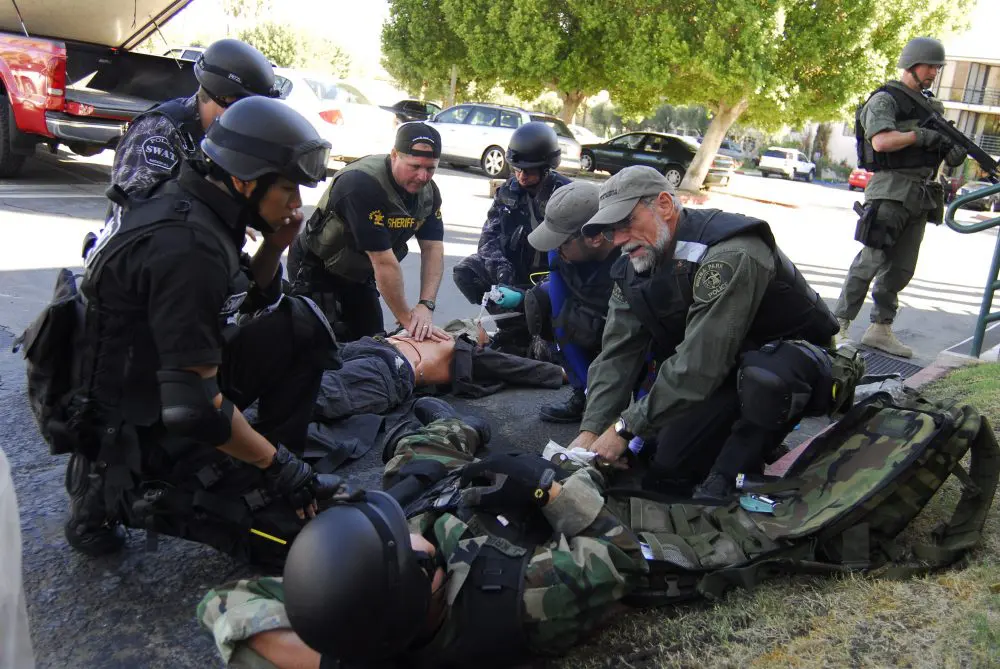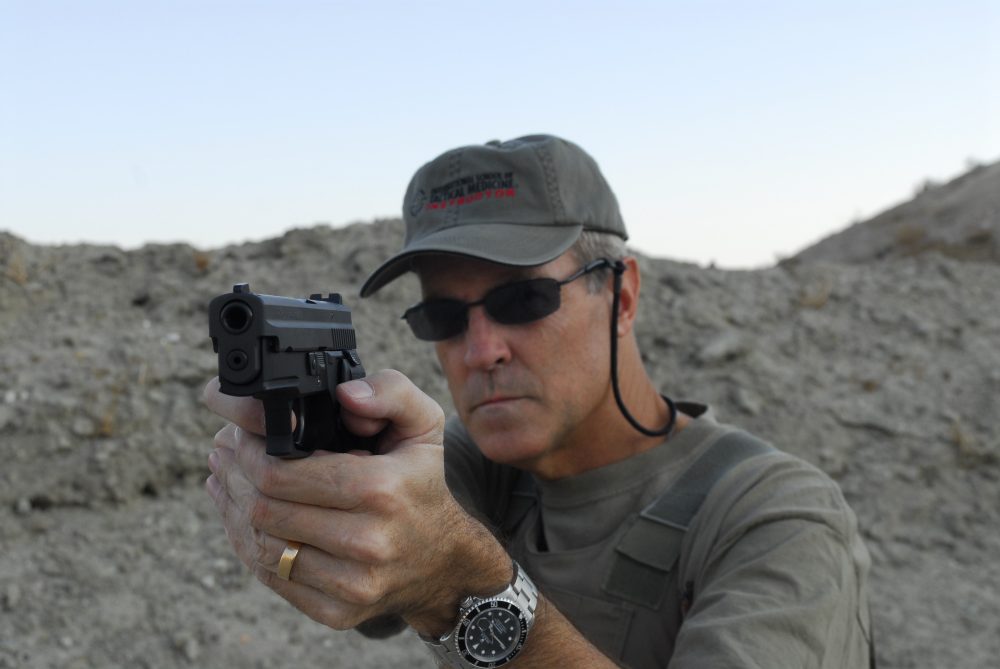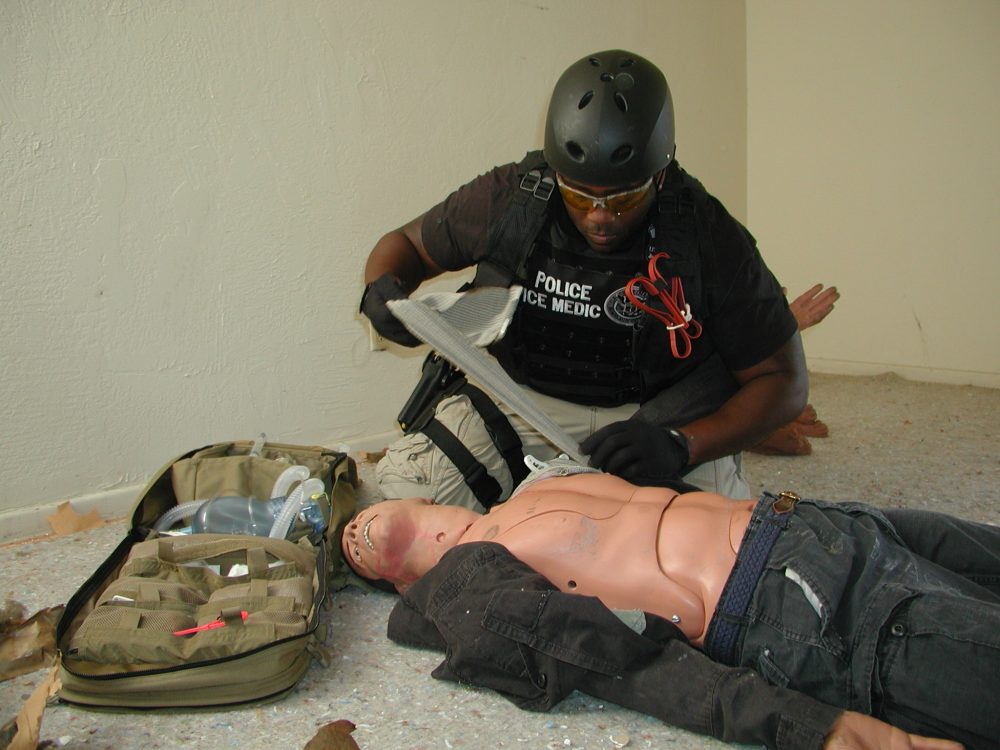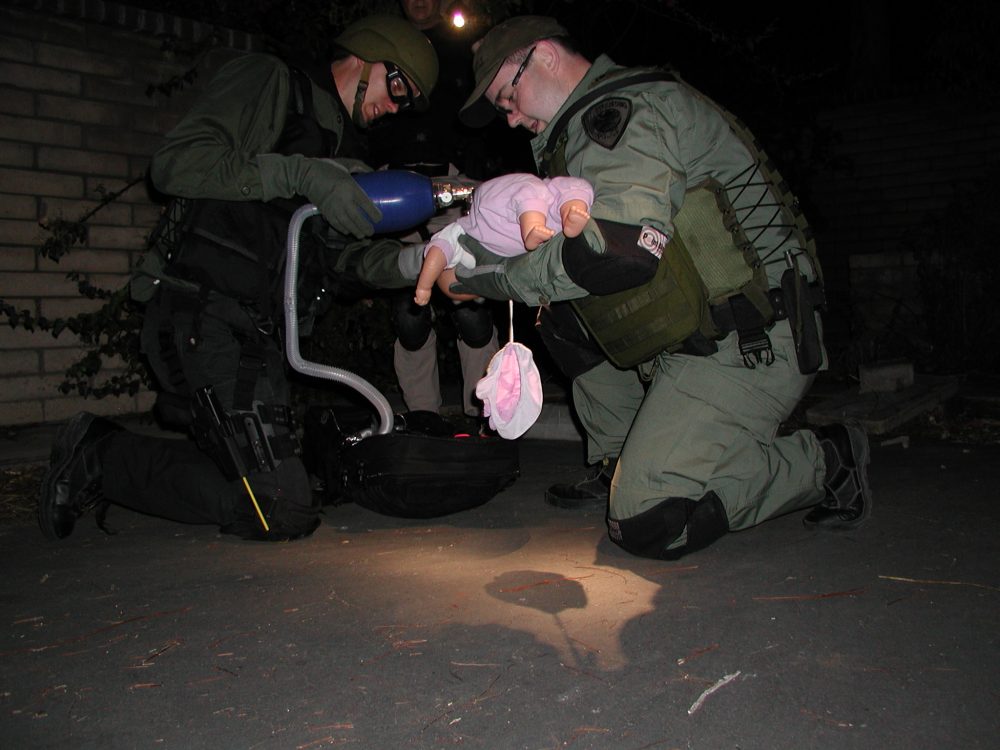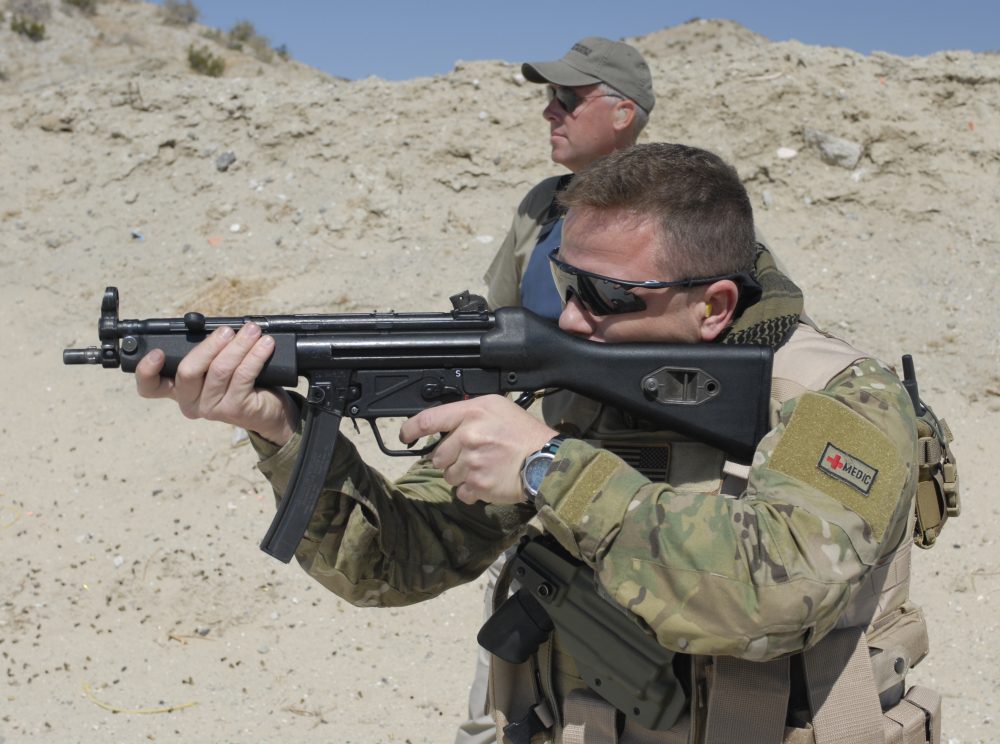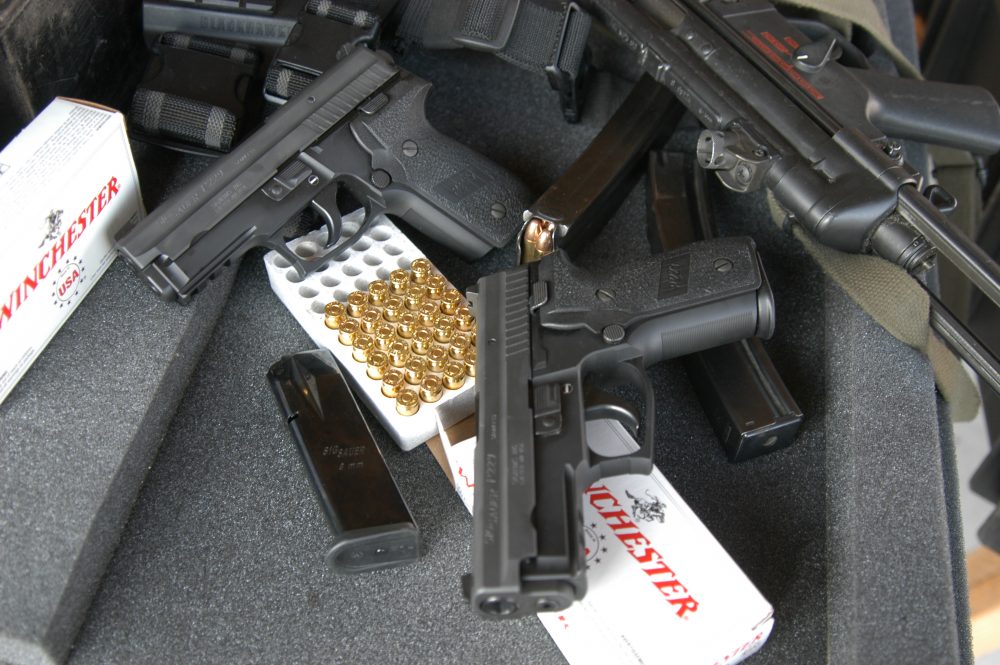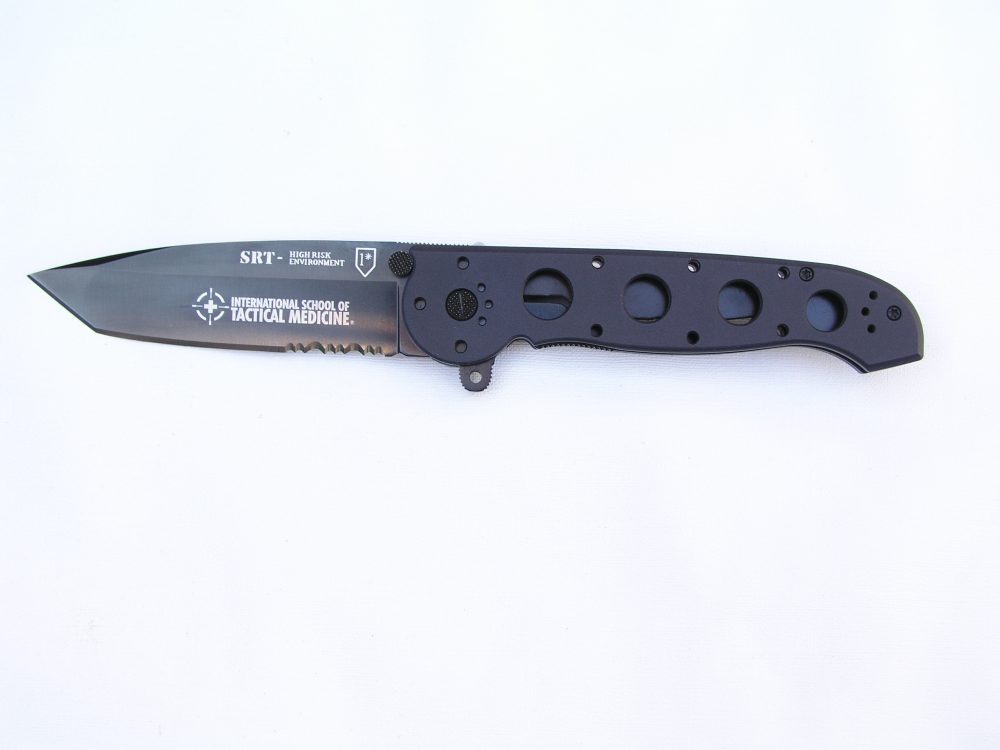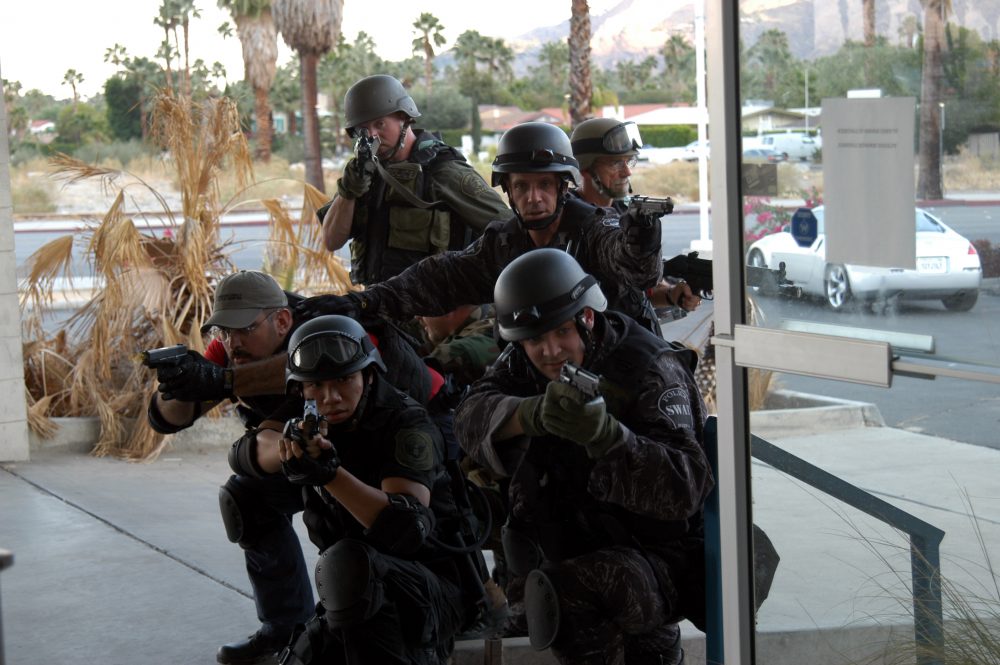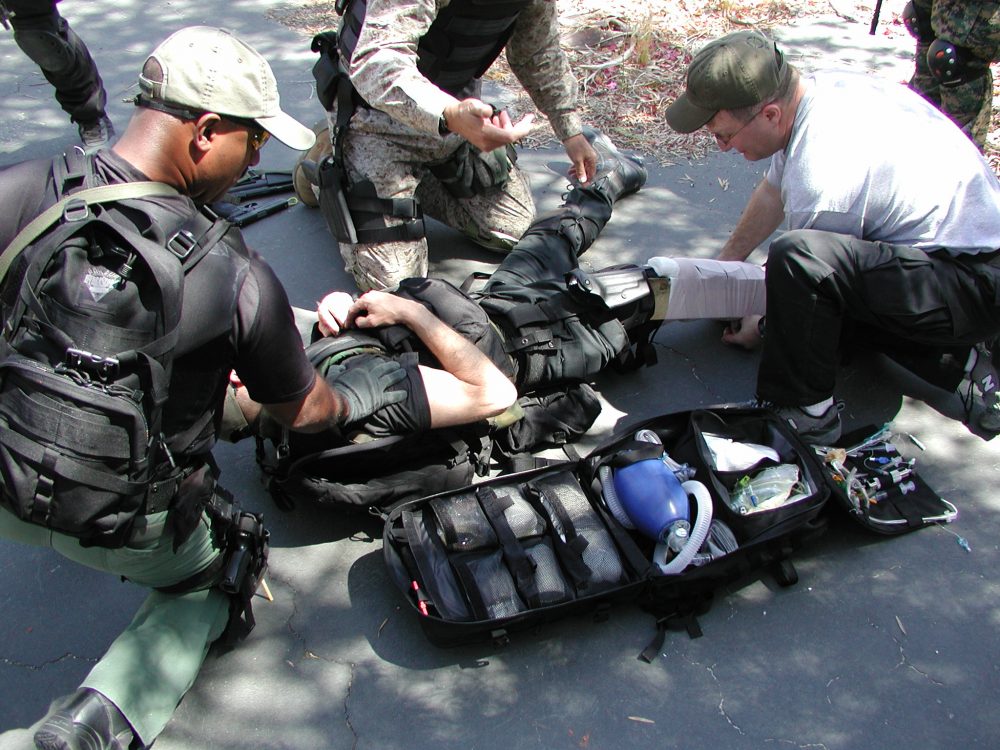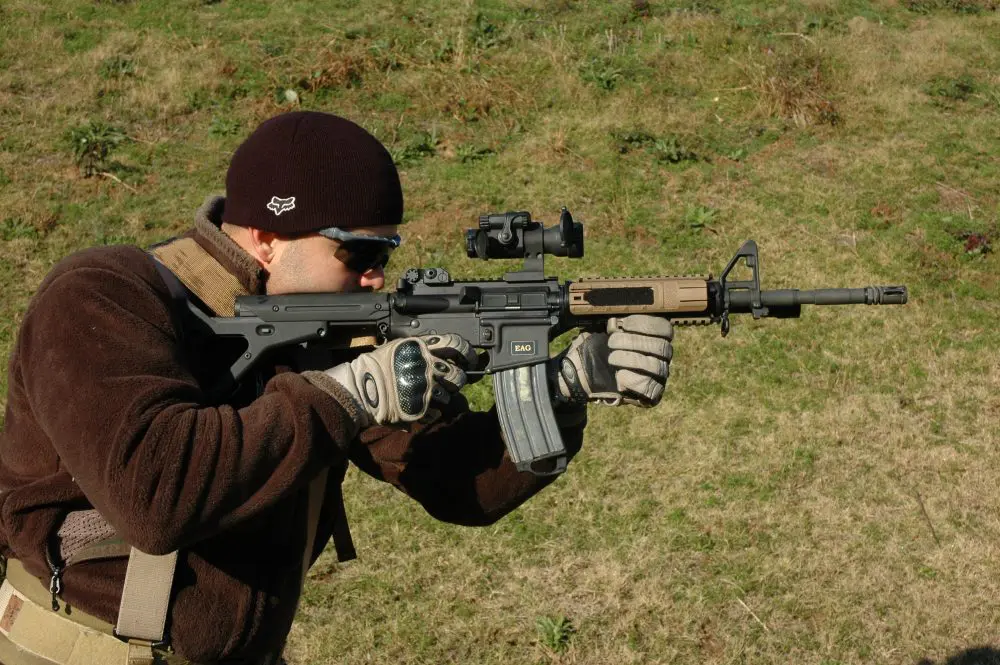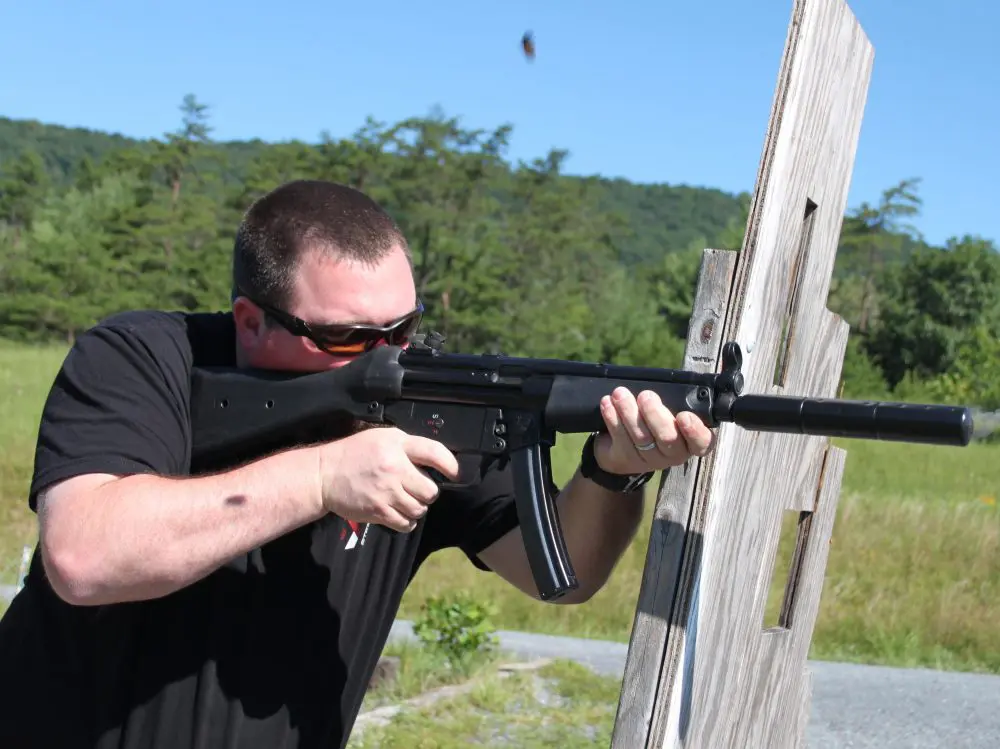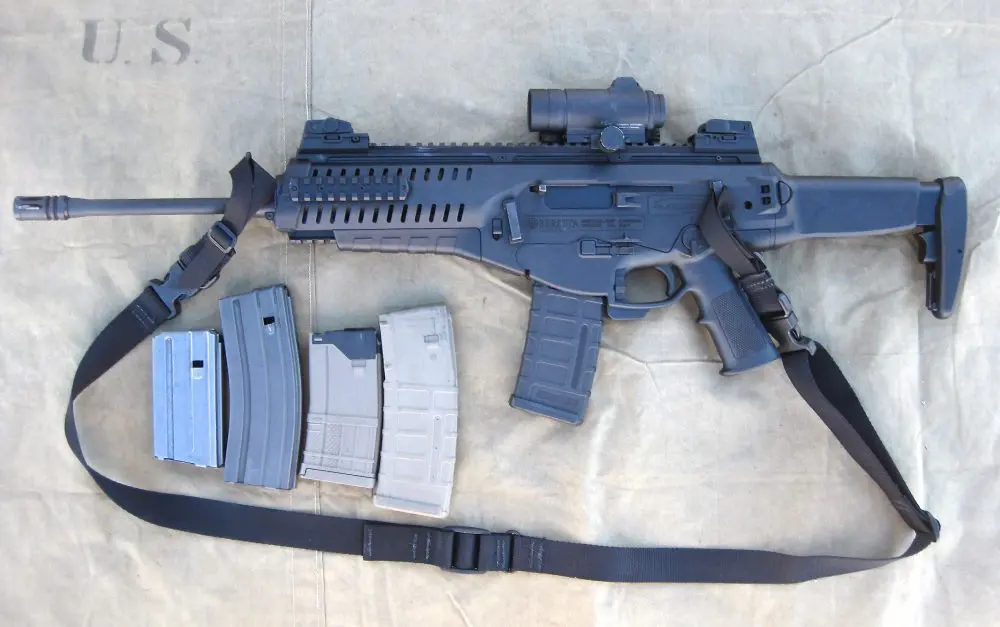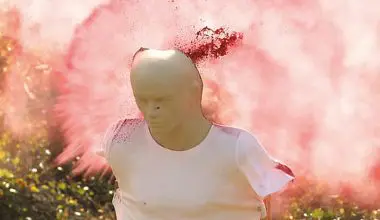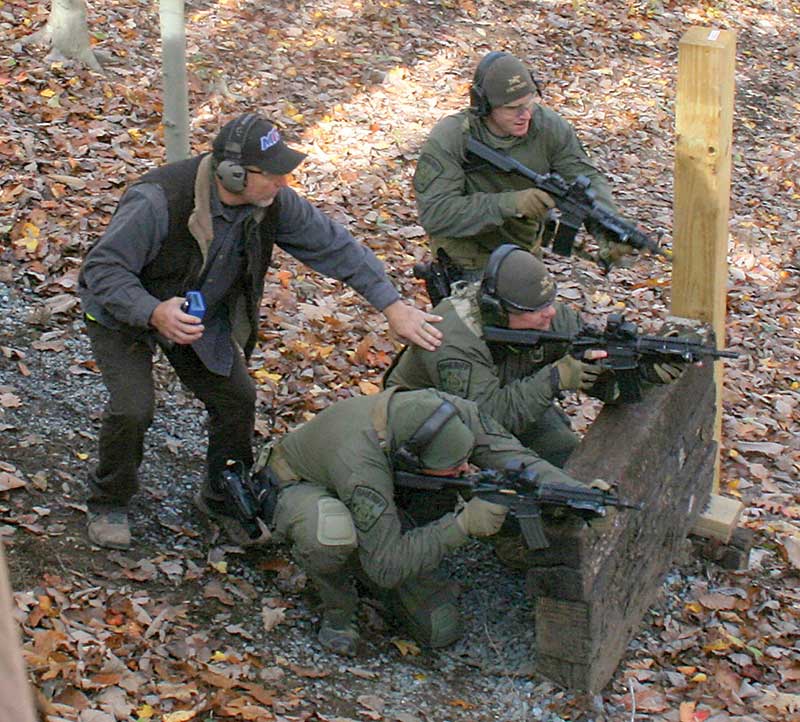As all tactical officers know, you perform as you train—and that is exactly what takes place at the nation’s premier program for training tactical medical personnel. The concept of providing on-scene advanced life support during tactical operations by trained medical professionals has become integrated into today’s elite law enforcement tactical units nationwide.
Table of Contents
HISTORY
In the early 1990s, Lawrence Heiskell and John Meyer of the former Heckler & Koch International Training Division began a joint venture and offered a course to assist law-enforcement agencies in training their medical personnel. The concept was an instant success and, over a ten-year period, hundreds of EMTs, paramedics and physicians from the United States and foreign countries completed the training.
Dr. Heiskell, an emergency physician, educator and 17-year veteran reserve police officer with the Palm Springs Police Department’s SWAT team, made the decision to create a permanent law-enforcement agency-based training program and to take the concept of tactical medicine to a new academic level by seeking certification by the State of California’s Peace Officer Standards and Training and by the United States Department of Homeland Security.
Dr. Lawrence Heiskell, ISTM’s founder and medical director.
Dr. Heiskell told S.W.A.T. magazine that all legitimate tactical medicine training programs should be law-enforcement agency based. This is because numerous concerns have surfaced over the past several years about civilian-based programs not teaching correct and current law enforcement tactical doctrine to its students. Dr. Heiskell said that this could result in someone getting injured, killed or causing the mission to fail, resulting in expensive litigation for the agency.
Dr. Heiskell also related to S.W.A.T. magazine that it is paramount that the faculty of any tactical medicine program consist of trained, experienced tactical officers and residency-trained board certified physicians who are also sworn law-enforcement officers. “One might argue that is a difficult order to fill, but why not offer the best—police tactical officers who are putting their lives on the line and deserve nothing but the best care possible.” Dr. Heiskell said, “We go far beyond providing just good medicine in bad places; our training program prepares students for the extreme. That is why our school motto is ‘The Best Medicine in the Worst Places.’”
Medic of the ICE enforcement team practices wound management skills.
THE TACTICAL MEDICINE CONCEPT
Tactical medicine can be defined as both emergency and non-emergency care provided to victims of illness or injury related to law enforcement or military operations, often in a hostile environment. Tactical Medicine in the early years was often referred to as Tactical Emergency Medical Support (TEMS); the EMS and pre-hospital community called it Tactical EMS, and the U.S. Military coined the term Combat Casualty Care.
Many law-enforcement agencies now have tactical medical teams composed of on-call physicians and pre-hospital care providers. Since many law-enforcement agencies and branches of the U.S. military have embraced this concept, it is now commonly known simply as Tactical Medicine.
Just as the tactical environment presents unique challenges to law enforcement officers, the same is true for personnel providing EMS in that environment. Tactical medical care providers must have an understanding of—and consideration for—law enforcement tactics and mission-specific objectives when planning and providing medical support.
What uniquely sets tactical EMS apart from standard EMS is the environment. When a SWAT team relies on traditional EMS to provide medical care and an operator or civilian is acutely injured during the mission, the EMS unit must wait until either the victim is brought out to a safe zone or the entire scene is secured by law enforcement before moving to the patient.
Tactical physician and paramedic practice pediatric resuscitation skill during night operation.
When a tactical medical unit is present, care can generally be rendered to the victim in a timely manner, and when the injuries involve acute airway issues or life-threatening hemorrhage, providing faster access to medical care may save additional lives.
The primary goal of a tactical medicine unit is to assist the tactical team in accomplishing its mission. This is achieved through team health management: a combination of keeping the tactical team members healthy before, during and after operations. A full tactical medicine program encompasses the provision of preventative and acute medical, and for some teams even canine support veterinary care. Ready access to such care has a positive effect on agency and team morale.
The manner in which a tactical medical team is utilized by law enforcement agencies differs widely. This difference stems from the many police and sheriff’s department reserve programs found in the Western United States, especially California, Arizona, Nevada, Washington, Utah and Oregon.
In a reserve status, the tactical medical provider has additional, formal law enforcement training. This allows the provider to perform as a sworn peace officer, bringing about an enhanced comfort level for the department and tactical team and potentially mitigating some issues of civil liability.
Tactical medics training to care for multiple injured officers.
On the East coast, reserve opportunities are less common. In this situation, medical providers typically serve as auxiliary units borrowed from traditional fire and EMS agencies. The liability issues and expenses in such a relationship are often resolved via a written “memorandum of understanding” between the participating agencies.
Selecting appropriate providers is accomplished through interviews, psychological testing, background investigations and physical fitness testing.
Dr. Heiskell told S.W.A.T. magazine, “We now live in a time in history when the threat of violence to civilians in our society is at its greatest and we rely on our law enforcement professionals and the military to do all they can to keep us safe and protected. It is our role as tactical medical providers to give back to these professionals by ensuring that someone is there to care for them if they are injured in the course of doing their duty.”
INTERNATIONAL SCHOOL OF TACTICAL MEDICINE
The International School of Tactical Medicine (ISTM) is based at the Palm Springs Police Training Center in Palm Springs, California. Clients include the U.S. Military, U.S. Department of Homeland Security, U.S. Secret Service, Department of Defense Contractors and many local law enforcement, fire department and EMS agencies. Clients also include numerous agencies from Canada, Europe and around the world.
The ISTM faculty consists of both medical and law-enforcement professionals. All physicians are residency trained and board certified in their specialty, published authors, hold faculty appointments at teaching hospitals and medical schools and are engaged in full-time practice of medicine. Additionally, the physician instructors are tactically trained and sworn law enforcement officers and serve as tactical physicians on SWAT teams.
U.S. Army medic receives advanced training with MP5 submachine gun.
The law-enforcement faculty component is composed of experienced police officers who are firearms and tactical instructors and are active on law enforcement SWAT teams.
The Palm Springs Police training facility provides unlimited logistical support for all courses in a secure law-enforcement environment with classrooms, range facilities and unique locations for scenario training. The arid desert climate and weather of Palm Springs allow the unique opportunity for year-round training.
The International School of Tactical Medicine has a two, one week, courses (for a total of 80-hours plus) which uniquely integrates both medical and tactical education, scenario-based teaching, hands-on training and firearms instruction with personalized attention to enhance student learning.
To ensure the maximum learning benefit, both courses should be taken consecutively. The school does not recommend that more than six months elapse between courses before completing the program. Students are given a weekend of rest between courses to ensure peak performance in the physically and mentally demanding second week.
“Official” firearms at ISTM are H&K MP5 submachine gun and SIG 229 pistol.
THE CURRICULUM
Basic Course
Day 1:
The morning of the first day is busy with registration and an introduction of the students and faculty. The morning didactic material begins with an introduction and overview of Tactical Medicine, which lays the foundation for the two-week school. Later, students are exposed to all aspects of current tactical and tactical medical gear.
The fundamentals of team concepts and planning, cover and concealment, as well as tactical exercises involving slow and deliberate team movement, are demonstrated and practiced in the afternoon. Here students learn the importance of effective team movement. In order to enhance learning, students practice in full tactical gear and body armor using mirrors, shields and weapons.
Day 2:
The handgun chosen by the school is the SIG Sauer 229. The morning is spent at the range with instruction on firearms safety, weapons handling and marksmanship of the tactical pistol.
The afternoon session has lectures and practical exercises involving the use, deployment and medical aspects of chemical agents and distraction devices as well as forced entry techniques. The students become familiar through demonstrations with shot locks, rams, bar pulls and hydraulic entry tools. The remainder of the afternoon is devoted to learning and practicing the fundamentals and techniques of dynamic clearing.
ISTM school knife is Columbia River Knife & Tool M16-14LE.
Day 3:
The morning session consists of classroom material covering tactical casualty care and the fundamentals of wound ballistics. This is followed by the all-important options for field hemorrhage control. Tourniquet use and applications are discussed as well as the pros and cons of the many types of hemorrhage control bandages currently on the market. The morning session concludes with lectures and discussions on the principles of team health management.
After lunch the students return to the classroom for Medical Aspects of Clandestine Drug Labs and Medical Management of K-9 Emergencies. The final classroom portion of the day is Forensics and Evidence Preservation. Tactical medical providers must know and learn the skills necessary to prevent destroying or disturbing a crime scene in the performance of their duties. For the remainder of the afternoon, students work on tactical medical scenarios.
Day 4:
First up is range training exercises with the HK MP5 submachine gun. Students learn the operational use of the MP5 weapon system, including nomenclature, stance, carry positions, and shooting positions while engaging targets. In the afternoon students learn about air medical transport procedures and flight physiology and Special Operations Aeromedical Evacuation. Additional afternoon topics include Disguised Weapons and Street Survival, Medical Threat Assessment and Barricade Medicine.
Students practice slow and deliberate entry techniques in basic course.
Day 5:
In the morning there is a one-hour written exam, which fulfills the requirements for continuing medical education and self-assessment. Next, in Tactical-Medical Scenarios, the instructors critique the students medically and tactically in their performances and decision-making, field triage, assessment and treatment.
Each tactical-medical scenario lasts approximately 30 minutes, with students rotating as tactical and medical personnel. Simunitions are also utilized during some of the scenarios to enhance the learning experience. Upon completion of the tactical exercises, the students return to the classroom for equipment return, debriefing, closing remarks and graduation.
This concludes the basic course. If students are taking the advanced course back-to-back, they have the weekend off to rest and enjoy the Palm Springs area.
Advanced Course
Day 1:
Tactical operations sometimes involve barricade situations that stem from domestic violence, and children are often involved. Classroom lectures begin with Pediatric Trauma Management and Trauma Anesthesia in the Tactical Environment. The afternoon session begins with Medical Management of Blast Injuries, and concludes with Tactical – Medical Scenarios.
Day 2:
The morning session begins with Advanced Airway Management material in the classroom and is followed by a three-hour Advanced Airway Management Workshop. Here students receive in-depth hands-on training in the skills needed for advanced airway management in a tactical environment.
Students have the opportunity to rotate skill stations, practice surgical airway techniques using swine tracheas and become familiar with many other options, including retrograde intubation, fiber-optic intubation and orotracheal intubation techniques. The combitube, lighted stylet, laryngeal mask airway (LMA) and intubating LMA are also demonstrated and practiced. The remainder of the morning is devoted to how to avoid and treat Environmental Injuries in the tactical environment.
The afternoon resumes at the range with Advanced Pistol and MP5 Submachine Gun instruction. Students practice shooting on the move, barricade shooting techniques and engaging multiple targets.
Tactical medics practice splinting leg of injured officer.
Day 2:
The class resumes late in the afternoon for a block of instruction on Biological Weapons. This material is focused on precisely what a tactical officer needs to know to care for members of his tactical team should they become involved in an act of bio-terrorism and how to clinically recognize the signs and symptoms of the more common potential biological agents.
As nightfall begins, students suit up for four hours of Low Light Tactics and Team Movement training. Since many tactical operations occur at night, and the tactical medical provider must develop the skills to provide medical assessment and care under low light, stressful conditions.
Day 4:
The entire morning consists of Advanced MP5 Submachine Gun and Pistol field exercises. Students are also given instruction on high-risk felony car stops and the techniques involved in extraction of hostages. Students practice these techniques while assaulting and shooting live rounds into vehicles containing targets in order to evaluate their shooting skills.
Police tactical teams are likely to be one of the first law enforcement units responding to a Weapons of Mass Destruction (WMD) event. The afternoon session begins with classroom material specifically addressing Chemical Weapons and Nerve Agents as well as Nuclear and Radiation Injuries. The Advanced Tactics and Medicine Course does not focus on mass casualty management, but instead those important WMD issues specific to tactical operations.
Day 5:
The final day of the advance course has multiple challenging scenarios that test the students on everything they have learned over the past ten days. Upon completion of the day’s scenarios, the students return to the classroom for the final equipment return, debriefing, closing remarks, and graduation.
Dr. Lawrence Heiskell, ISTM’s founder and medical director.
CONCLUSION
Tactical medicine has become a “hot” topic in the last few years. Some schools are very good, while others seem to have added it as an afterthought to their curriculum. The International School of Tactical Medicine was among the first to pioneer the concept tactical medicine. If you have the need for a school of this type, ISTM would be a good place to start.
[Editor’s Note: The above article is a departure from our normal guidelines in that a member of the S.W.A.T. staff has not personally attended the school. However, ISTM has developed a sterling reputation over many years in operation and with the increased interest in the field of tactical medicine we felt it important to let our readers know of its existence. We hope to have a full report from someone who has attended ISTM in the future.]
SOURCE:
International School of Tactical Medicine
Dept. S.W.A.T.
P.O. Box 2852
Palm Springs, CA 92263
(760) 325-2591
www.tacticalmedicine.com
CONTINUING MEDICAL EDUCATION
The ISTM faculty believes that Peer-Review Continuing Medical Education is an essential component of any credible educational and training program. Category 1 CME is available for 21 hours for the basic course and 25 hours for the advanced course through the American College of Emergency Physicians (ACEP).
The State of California Peace Officer Standards and Training (P.O.S.T.) has certified the two-week school for 80 hours of Professional Education Units (PEUs) for those students who complete the program. The State of California control numbers and course titles are:
- SWAT/Medical Basic: 2080-23004
- SWAT/Medical Advanced: 2080-23006
ODP & DHS Grant Funding
The International School of Tactical Medicine is the first federally approved Tactical Medicine School in the United States. The United States Department of Homeland Security Office for Domestic Preparedness (ODP) has approved the International School of Tactical Medicine Basic and Advanced Tactical Medicine courses. Course control numbers are:
- ODP 060510-04R Basic Tactics and Medicine (BTM)
- ODP 060510-05R Advanced Tactics and Medicine (ATM)
Students may attend this training and use Homeland Security funds for tuition and travel expenses. Interested agencies and individuals are urged to contact the ISTM administrative office early to secure a seat in the school. Classes usually fill 90 days prior to course start dates.
